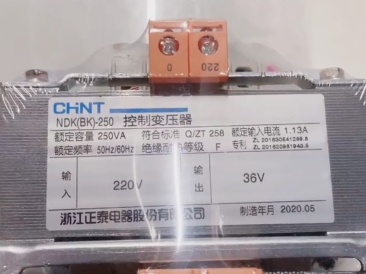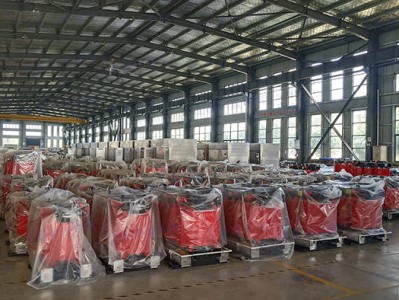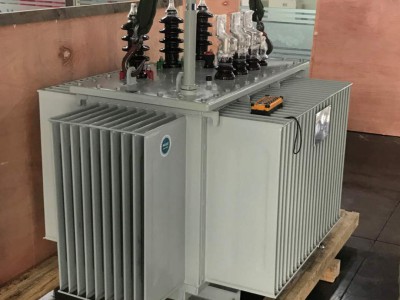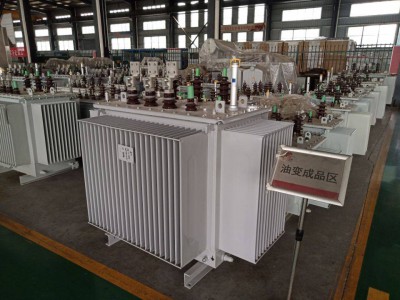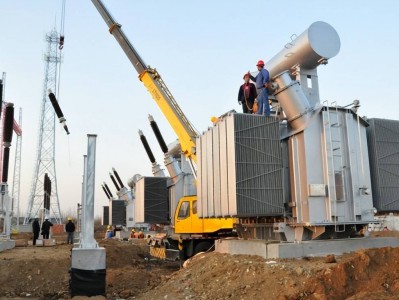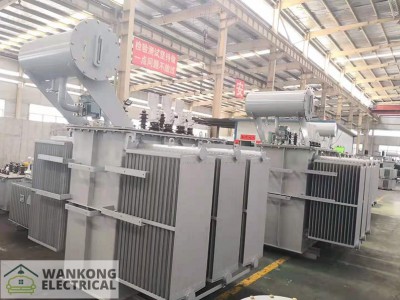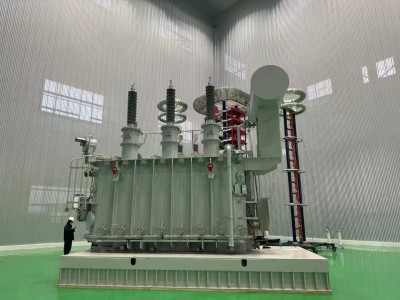S11(13)-MZT series transformer
Product description
 The S11(13)-MZT series transformer is a specific type of transformer. Here is a detailed introduction to it:
The S11(13)-MZT series transformer is a specific type of transformer. Here is a detailed introduction to it:
I. Product Features
1. **High efficiency and energy saving**
- **Core technology**:
The S11 - MZT series transformer adopts high-quality core materials, such as silicon steel sheets with high magnetic permeability. The S13 - MZT series is further optimized on this basis, and its core structure design is more reasonable. For example, by adopting a stepped joint core structure, the hysteresis loss and eddy current loss of the core are effectively reduced, significantly reducing the no-load loss of the transformer. Compared with traditional transformers, the no-load loss of the S11 - MZT series can be reduced by 20% to 30%. The reduction amplitude of the no-load loss of the S13 - MZT series is even greater, reaching 30% to 40%, thereby improving the conversion efficiency of electric energy and achieving the purpose of energy saving.
2. **Low-noise operation**
- **Structural optimization**:
By optimizing the core and winding structure of the transformer, the vibration caused by electromagnetic force is reduced. For example, by adopting a special winding method, the ampere-turn distribution of the winding is more uniform, reducing the electromagnetic force generated by the leakage magnetic field. At the same time, effective shock absorption measures are adopted on the installation structure of the transformer, such as installing shock-absorbing rubber pads at the bottom of the oil tank. These measures make the noise level of the S11(13)-MZT series transformer during operation significantly lower than that of ordinary transformers and can meet the use requirements of places with high noise requirements, such as residential areas, hospitals, schools and other surrounding areas.
3. **Good overload capacity**
- **Heat dissipation and insulation coordination**:
This series of transformers fully consider the balance between heat dissipation and insulation performance in the design. An efficient heat dissipation structure is adopted, such as increasing the area of the heat sink or optimizing the design of the heat dissipation oil channel, so that the transformer can dissipate heat in time when operating under overload. At the same time, high-quality insulation materials and reasonable insulation structure design ensure that the insulation performance of the transformer will not rapidly decline under overload conditions. Under a certain overload multiple (such as 1.2 to 1.5 times the rated capacity), it can operate stably for a short time (such as 1 to 2 hours), providing a guarantee for dealing with sudden overload requirements in the power system.
4. **High reliability**
- **Materials and processes**:
High-quality conductive materials are selected to make windings, such as high-purity copper materials, which have low resistivity and can reduce load loss. In the manufacturing process, strict control is exercised over all aspects of the production process, such as the tightness of winding winding and the wrapping quality of the insulation layer. In addition, the oil tank is made of high-quality steel and has good sealing performance to prevent transformer oil leakage and ensure the stability of the internal environment of the transformer, thereby improving the overall reliability of the transformer and reducing the probability of failures.
II. Technical Parameters
1. **Rated voltage**
- Usually covers multiple voltage levels, such as 10kV, 35kV, etc. These rated voltage levels enable the transformer to adapt to different voltage requirements of power systems. In power facilities such as substations and distribution stations, it can be selected according to the actual grid voltage situation to ensure normal connection and stable operation with the power grid.
2. **Rated capacity**
- The rated capacity range is wide. For example, it ranges from several hundred kVA (such as 315kVA) to several thousand kVA (such as 2000kVA). Different rated capacities can meet the power consumption needs of different scales. Small factories, commercial buildings, etc. can select S11(13)-MZT series transformers with appropriate rated capacities according to the total capacity of their own electrical equipment.
3. **Connection group label**
- Common connection group labels include Yyn0, Dyn11, etc. The Yyn0 connection group label is suitable for three-phase four-wire power supply systems. Its characteristic is that it can provide a neutral line and is suitable for power supply of mixed lighting and power loads. The Dyn11 connection group label has advantages in suppressing third harmonics, can improve power quality, and has better performance under asymmetric loads. It is suitable for loads with high requirements for power quality.
4. **Insulation level**
- For the S11(13)-MZT series transformer of 10kV voltage level, the power frequency withstand voltage (1 minute) is generally 35kV, the peak value of the impulse test voltage (full wave) is 75kV, and when it is chopped wave, it is 85kV; for the transformer of 35kV voltage level, the power frequency withstand voltage (1 minute) is correspondingly increased, and the peak value of the impulse test voltage is also higher. The specific values are based on relevant national standards and product design specifications. These insulation level parameters ensure that when the transformer is in normal operation and subjected to overvoltage impacts (such as lightning strikes), the internal insulation structure can withstand the corresponding voltage stress without being damaged and ensure the safe operation of the transformer.
5. **No-load loss and load loss**
- Transformers of the S11 - MZT and S13 - MZT series with different capacities have different standard values of no-load loss and load loss. Taking a 1000kVA capacity as an example, the no-load loss of the S11 - MZT series transformer may be about 1kW, and the load loss (75℃) may be about 10kW; while the no-load loss of the S13 - MZT series transformer of the same capacity may be reduced to about 0.8kW, and the load loss will also be optimized. The load loss is allowed to have a certain error range, usually between ±5% - ±10%. The specific value is clearly stipulated in the product's technical specification.
6. **Impedance voltage**
- Generally between 4% - 6%. The specific value depends on the capacity and design requirements of the transformer. A reasonable impedance voltage value can effectively limit the size of short-circuit current when a transformer has a short-circuit fault, protecting the transformer itself and other connected electrical equipment from excessive short-circuit current impacts. At the same time, during normal operation, it also helps the matching between the transformer and the power supply system and load, ensuring the stable transmission and distribution of electric energy.
### III. Environmental Requirements for Use
1. **Altitude**
- Generally, it is required not to exceed 1000m. When the altitude exceeds this value, due to factors such as reduced atmospheric pressure and thin air, the heat dissipation and insulation performance of the transformer will be affected. For example, when used in an area with an altitude of 2000m, special design of the transformer may be required, such as increasing the insulation distance, strengthening heat dissipation measures or reducing the rated capacity for use to ensure its normal operation.
2. **Ambient temperature**
- The maximum temperature usually does not exceed +40℃, the minimum temperature is not lower than -25℃ (for cold regions, special low-temperature products may be required), and the maximum daily temperature difference is 25K. When used in an environment outside this temperature range, the performance of the insulation material of the transformer may be affected, resulting in a reduction in insulation resistance and an increase in the risk of leakage. At the same time, it will also affect the heat dissipation effect, increase the internal temperature of the transformer, and then affect its normal operation and service life.
3. **Relative humidity**
- The average monthly relative humidity does not exceed 90%, and the average daily relative humidity does not exceed 95%. High humidity environments can easily cause the insulation parts of the transformer to get damp, reducing insulation performance and even possibly causing insulation breakdown and other faults. When used in areas with high humidity, such as coastal areas or damp basements, moisture-proof measures need to be taken, such as installing in a dry and ventilated location, using moisture-proof materials or installing moisture-proof devices.
4. **Pollution level**
- According to different usage areas and environmental conditions, the pollution level is generally divided into levels I, II, III, etc. In areas with a high pollution level, such as environments with a large amount of dust, salt, chemical pollutants or industrial dust, the external insulation surface of the transformer is prone to accumulate dirt and reduce insulation performance. At this time, it is necessary to strengthen the protection measures of the external insulation, such as increasing the creepage distance, using anti-pollution insulators or performing regular cleaning and maintenance.
5. **Installation method**
- It can be installed indoors or outdoors. When installed indoors, pay attention to good ventilation, convenient maintenance and repair, and at the same time, avoid being too close to other equipment or objects to avoid affecting heat dissipation and operation. When installed outdoors, factors such as rain protection, sun protection, and wind and sand prevention need to be considered. Usually, corresponding protective enclosures or rain shelters and other facilities will be equipped. For example, when installed outdoors in the open air, it is necessary to ensure that the transformer has sufficient protective measures to prevent rainwater from intruding and direct sunlight, and ensure that the surrounding environment is well ventilated to facilitate heat dissipation.
### IV. Application Scenarios
1. **Industrial field**
- Widely used in various industrial enterprises, such as machinery manufacturing factories, chemical enterprises, metallurgical enterprises, etc. In machinery manufacturing factories, it provides stable power supply for equipment such as machine tools, cranes, and welding machines; in chemical enterprises, it guarantees the power demand during the chemical reaction process to ensure continuous and stable production; in metallurgical enterprises, it is used to drive large equipment such as electric furnaces and rolling mills to avoid production accidents and economic losses caused by power outages.
2. **Commercial center**
- Suitable for commercial places such as large shopping malls, supermarkets, office buildings, and hotels. Many electrical equipment such as lighting, air conditioning, elevators, and fire protection in these places need reliable power supply. The S11(13)-MZT series transformer can meet the large-capacity and high-stability power consumption needs of these places and ensure the normal operation of commercial operations.
3. **Power system**
- In power facilities such as substations and distribution stations, as a key equipment for power transmission and distribution, it converts high-voltage electric energy into low-voltage electric energy suitable for users. For example, convert 35kV high-voltage electricity into 10kV or lower voltage level electricity, and then transmit it to terminal users such as factories, residential areas, and commercial areas.
4. **Public facilities**
- For public facilities such as hospitals, schools, and libraries, due to their high requirements for noise and power quality, the low-noise operation characteristics and good power quality guarantee ability of the S11(13)-MZT series transformer make it an ideal power supply equipment choice and can provide these places with stable, reliable and quiet power supply.

